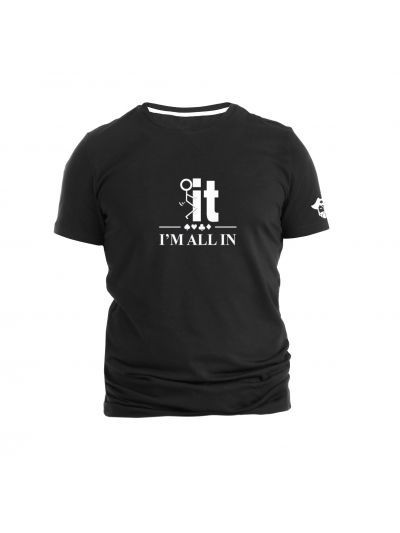Dubai, known for its gleaming skyscrapers and bustling economy, is more than just a city—it's a melting pot of cultures from around the globe. With a population comprised of both Emiratis and expatriates hailing from over 200 nationalities, Dubai embodies diversity in its truest sense.
Importance of Cultural Sensitivity in Website Design
In the digital age, websites serve as the gateway to a brand's identity and offerings. For businesses targeting Dubai's multicultural audience, cultural sensitivity in website design isn't just a nicety—it's a necessity. By understanding and respecting the cultural nuances of this cosmopolitan city, brands can forge deeper connections and foster trust among their audience.
II. Understanding Dubai's Cultural Landscape
Historical Influences: From Bedouin Traditions to Globalization
Dubai's rich history is shaped by a myriad of influences, from its Bedouin roots to its emergence as a global hub of trade and commerce. Traditional values coexist alongside modern aspirations, creating a unique cultural mosaic that defines the city's identity.
Emirati Culture: Values, Customs, and Traditions
Central to Dubai's cultural fabric are the values and customs upheld by its Emirati population. Hospitality, respect for elders, and a strong sense of community are hallmarks of Emirati culture, influencing everything from social interactions to consumer preferences.
Expatriate Communities: Diversity and Integration
Dubai's expatriate communities form an integral part of its social tapestry, contributing to its cosmopolitan flair. Whether it's the bustling streets of Deira or the luxury boutiques of Downtown, expatriates from diverse backgrounds shape the city's cultural landscape and consumer habits.
Impact of Globalization: Modernization and Cultural Fusion
Globalization has played a pivotal role in shaping Dubai's cultural identity, fueling economic growth and cultural exchange. The city's skyline is a testament to its embrace of modernity, yet beneath the veneer of glitz and glamour lies a deep-rooted respect for tradition and heritage.
III. Cultural Considerations in Website Design
Visual Aesthetics: Colors, Symbols, and Imagery
In designing websites for Dubai's diverse audience, visual aesthetics play a crucial role in capturing attention and conveying messages effectively. From vibrant colors that evoke the desert landscape to symbols imbued with cultural significance, every element must be thoughtfully chosen to resonate with the target audience.
Language Choices: Arabic, English, and Beyond
Language is a powerful tool for connecting with audiences on a personal level. In Dubai, where Arabic and English are widely spoken, bilingual websites are the norm. However, brands seeking to truly engage with diverse communities may consider incorporating additional languages to cater to specific demographics.
Navigation and User Experience: Adapting to Cultural Preferences
User experience is paramount in ensuring that visitors can navigate a website seamlessly. Cultural preferences, such as reading patterns and browsing habits, should inform the design and layout of web pages to enhance usability and satisfaction.
Content Creation: Tailoring Messages for Diverse Audiences
Content is king in the digital realm, but its effectiveness hinges on relevance and resonance. By tailoring messages to reflect the cultural nuances and preferences of different audience segments, brands can foster deeper connections and drive engagement.
IV. Designing for Cultural Sensitivity
Respect for Islamic Values: Avoiding Taboos and Offenses
In a predominantly Muslim society like Dubai, it's essential for brands to demonstrate respect for Islamic values and sensitivities. This includes avoiding imagery or content that may be deemed offensive or inappropriate, such as alcohol or provocative imagery.
Inclusivity and Diversity: Representing All Communities Equally
Dubai's strength lies in its diversity, and websites should reflect this ethos by representing all communities equally. Whether it's through inclusive imagery, diverse language options, or culturally relevant content, brands can demonstrate their commitment to embracing diversity and fostering inclusion.
Accessibility: Ensuring Equitable Access for Everyone
Accessibility is a core tenet of inclusive design, ensuring that websites can be accessed and enjoyed by people of all abilities. From intuitive navigation to screen reader compatibility, prioritizing accessibility not only enhances user experience but also reflects a brand's commitment to social responsibility.
Localization: Adapting Content for Specific Cultural Contexts
Localization goes beyond mere translation—it involves tailoring content to suit the unique cultural context of the target audience. Whether it's incorporating local idioms, references, or customs, brands can create more meaningful connections by speaking the language of their audience.
V. Case Studies: Successful Websites in Dubai
Example 1: Souq.com - Embracing Cultural Diversity in E-commerce
Souq.com, often dubbed the "Amazon of the Middle East," is a prime example of a website that caters to Dubai's diverse audience. By offering a wide range of products, supporting multiple languages, and embracing cultural nuances in its marketing campaigns, Souq.com has become a household name across the region.
Example 2: Emirates Airlines - Tailoring User Experience for Global Travelers
As one of the world's leading airlines, Emirates understands the importance of cultural sensitivity in its digital presence. From multilingual customer support to personalized content recommendations, Emirates Airlines ensures that every aspect of its website reflects the diverse needs and preferences of its global clientele.
Example 3: Visit Dubai - Showcasing the City's Rich Cultural Tapestry
Visit Dubai, the official tourism website of the city, is a showcase of cultural diversity and vibrancy. Through immersive multimedia experiences, localized content, and interactive features, Visit Dubai invites visitors to explore the city's rich tapestry of attractions, events, and experiences.
VI. Strategies for Effective Cultural Integration
Research and Understanding: Delving Deep into Cultural Insights
Successful cultural integration begins with thorough research and understanding of the target audience. By delving deep into cultural insights and consumer behaviors, brands can tailor their digital strategies to resonate with diverse communities effectively.
Collaboration: Working with Local Experts and Communities
Collaboration is key to creating culturally resonant websites. By engaging with local experts, cultural consultants, and community leaders, brands can gain valuable insights and ensure that their digital initiatives are authentic and relevant to the target audience.
Testing and Iteration: Refining Designs Based on Feedback
Continuous testing and iteration are essential for optimizing website performance and user experience. By soliciting feedback from users representing diverse demographics, brands can identify areas for improvement and refine their designs to better meet the needs and expectations of their audience.
Continuous Learning: Staying Updated on Cultural Trends and Shifts
Cultural dynamics are ever-evolving, and brands must stay abreast of the latest trends and shifts to remain relevant. By fostering a culture of continuous learning and adaptation, brands can position themselves as dynamic and responsive entities that are attuned to the needs and preferences of their audience.
VII. Conclusion
Embracing Diversity: The Key to Website Success in Dubai
In the fast-paced digital landscape of Dubai, cultural sensitivity isn't just a buzzword—it's a strategic imperative for brands seeking to thrive in this multicultural environment. By embracing diversity, respecting cultural nuances, and crafting websites that resonate with the city's diverse audience, brands can forge stronger connections, drive engagement, and ultimately, achieve lasting success.
Final Thoughts on Crafting Culturally Resonant Websites
As we've explored in this article, navigating cultural nuances in website design requires a nuanced understanding of the target audience and a commitment to inclusivity and diversity. By incorporating cultural considerations into every aspect of the design process—from visual aesthetics to content creation—brands can create digital experiences that transcend cultural boundaries and foster meaningful connections with their audience.











